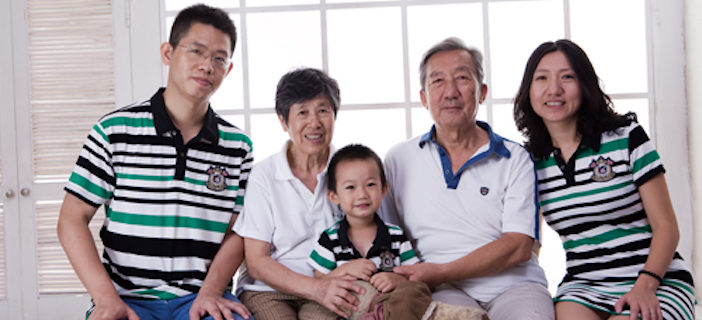Christmas and Spring Festival (also known as Chinese New Year) have a lot in common. They are both about family reunions, and are the most important holidays in their respective calendars. You might have celebrated Christmas last month; now, it is time to get into the holiday spirit for Spring Festival.
Spring Festival (known in Chinese as chunjie or 春节) falls on the first day of the first lunar month and ends with the Lantern Festival on the 15th day of the month. This year’s Spring Festival kicks off the Year of the Horse on January 31, with the last day of the celebrations falling on February 14.
A few weeks from now, airports, train stations, and long-distance bus stations will be flooded with people returning home for Spring Festival. The most important days are the eve of Chinese New Year and the subsequent three days. Most Chinese will do anything to make sure they do not miss this crucial time with their families.
Understanding – and embracing the traditions – of Spring Festival will go a long way towards engaging with Chinese culture and friends. We spoke to a modern yet traditional Chinese family to find out how they celebrate the country’s most important holiday.
The Lei-Li Family
Originally from Xi’an in Shaanxi Province, Li Fang has been living in Beijing since 2004 after studying in Germany for four years. After she and her husband Lei Zhen got married, they spent almost every Spring Festival with Lei’s family (also from Xi’an). Their 3-year-old son, Lei Yunkai, was born in Beijing during the Year of the Tiger (2010) so the family nicknamed him “tiger baby” (hubao, 虎宝). Li works for the Daimler Group in Beijing and her husband currently works in Burma for the Chinese government.
Where does your family usually celebrate Spring Festival?
Following Chinese tradition, we usually return to my husband’s home in Xi’an to spend the eve of Spring Festival with his parents, though we also make sure to spend time with my parents.
How important is Spring Festival to your family?
It is the most important holiday for all Chinese and, of course, for my family. It is a good chance for us to catch up with family and friends, and relax after a year’s hard work. When I was studying abroad, I would make dumplings, talk to my parents on the phone, and watch chunwan (CCTV’s annual Spring Festival Gala) on the computer to celebrate.
What are some of your family’s traditions?
We make dumplings, play mahjong, decorate the door with chunlian [red poetry couplets placed around the door for good luck], sing karaoke, and watch chunwan with the whole family.
Are there any special traditions from your hometown that other Chinese people may not be familiar with?
My father is from Tianjin and my mother is from Shandong, so we are not a typical Shaanxi family. When I visited my husband’s family for Spring Festival, I noticed that they still make mo [a type of local unleavened bread], which people appreciated a lot when food was scarce. It was given as a gift when visiting relatives. They also like the number four when giving out gifts, believing that all good things came in pairs.
How does your family decorate the house for Spring Festival?
With the children, we put chunlian around the door and paper cuts in the windows. Decorations are usually red and gold because they are considered auspicious colors in Chinese culture. After I had my son, I enjoyed the process of decorating more because he had so many questions like “Why are we doing this?” I used the opportunity to help him better understand our traditions.
What does your family usually eat for Spring Festival?
Fish, chicken, duck, pork, and ribs are a must. My parents make dumplings before the eve of Spring Festival and eat them after dinner as late-night snack. By contrast, most Shaanxi families – including my husband’s – have dumplings as the first meal on the first day of Spring Festival.
What does your family drink for Spring Festival?
My side of the family has both red wine and Chinese baijiu, but when men get together they only drink baijiu.
Who cooks the most important dinner on Spring Festival Eve?
My mother-in-law does all the hard work: preparing, cooking and cleaning (although I help out too). According to Shaanxi tradition, a man seldom cooks unless he is a chef and they hardly ever do the dishes.
What does your son love the most about Spring Festival?
Lighting fireworks, having lots of candy and snacks, and – most importantly – receiving red envelopes (or hongbao) filled with money. Last year almost everyone gave him a hongbao, though he also received clothes and books.
Do you tell your son stories about Spring Festival?
He is a bit too young right now, but I look forward to telling him more. For instance, some people believed that lighting fireworks could scare away demons. I can also tell him family stories to help him know his relatives better.
What was Spring Festival like when you were a child? How have things changed?
When I was young, spring festival meant new clothes, which many children would look forward to for months. Because we did not have refrigerator at the time, many families would start preparing food several days in advance by preserving and frying the foods so they would keep longer. We also used to visit as many families and friends as possible when I was young, but now most of those visits are replaced by text messages.
Does your family celebrate Christmas or other Western holidays?
We do not celebrate [the religious aspect of Christmas], but we love the holiday and my son loves to help me decorate the tree. Last month, I bought him an Advent calendar with chocolate and gifts. Suddenly, he was more willing to get up in the morning!
How will your family celebrate the upcoming Spring Festival?
We will not be able to go to Xi’an this year because my husband is working in Burma. We are planning to spend Spring Festival there instead. However, we will definitely talk to our parents on the phone, make dumplings, and watch chunwan on the computer.
Photo courtesy of Li Fang
This article originally appeared on p32-33 of the beijingkids January 2014 issue.
Check out the PDF version online at Issuu.com




